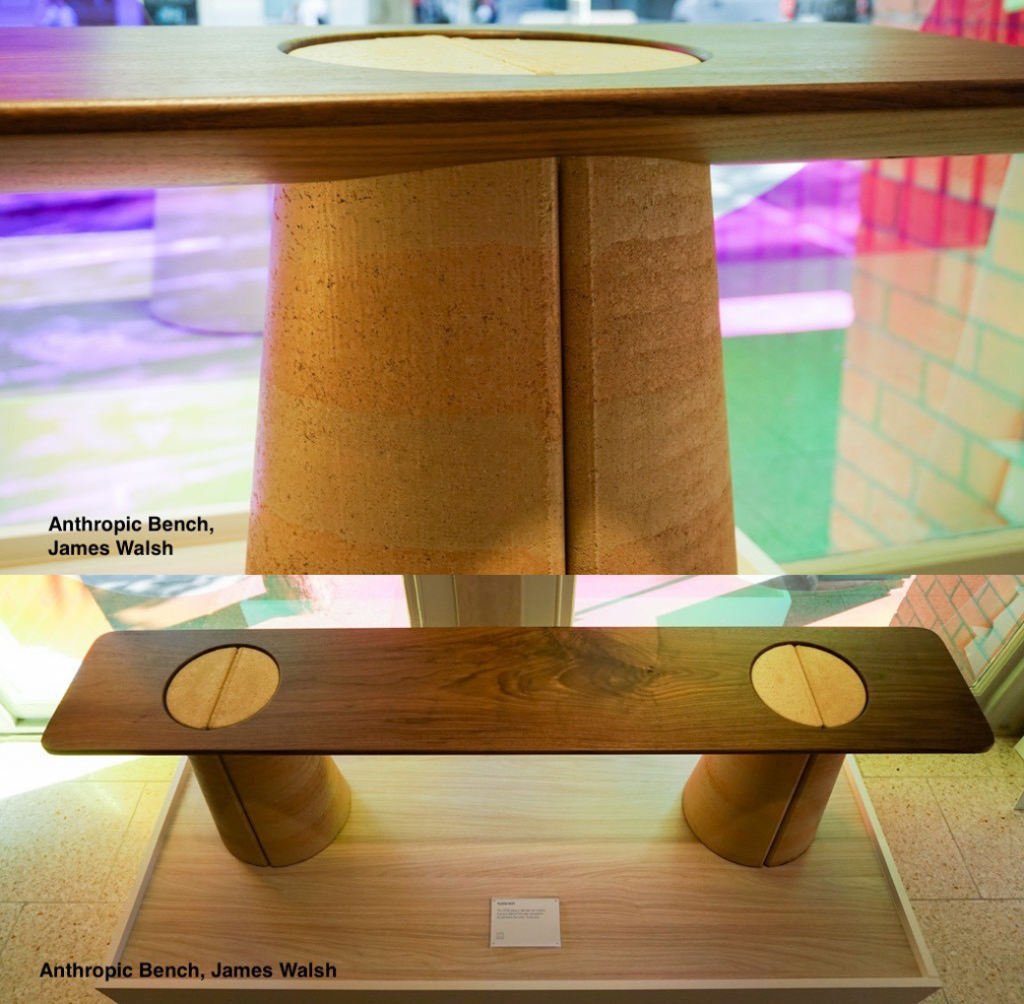Author and photographer: Joshua Summerfield
Brimming with creative craft, the Australian Furniture Design Award 2020 exhibition is an exploration into alternate furniture solutions. Hosted by National Gallery Victoria (NGV) and Stylecraft, the shortlisted entries of Australia’s most significant furniture design award aspire to promote a life of luxury and contemporary style.
Part of Melbourne Design Week 2020, the biennial Furniture Design Award sees Australian designers compete with their innovations, offering the winner professional mentoring, commercial production opportunities and a $20,000 prize. This award is reserved for a current concept design which has not yet been exhibited or commercially produced. This makes for an exciting playing-field, as the designer cannot gather public response before entering it into the competition.
Located on Little Collins Street, Stylecraft’s showroom provides a sophisticated, modern backdrop to the exhibited works. Viewers are free to explore the works. Some pieces allow interaction, while others are off limits to public. This year, many pieces bore clean, geometric silhouettes. Two prominent styles were statement and art deco; an indication that Australian designers seek to make an impact in your home.

Pieces such as Datum 72 Table, by Design King Company x Dr. Christian Tietz, explored a new perspective on the ‘ritual of sharing a meal’, inspired by ‘still life and Cubist paintings’. The modular table had recessed holes to place bowls, vases, and tableware into the surface. The table has a striking presence in the room, especially with the vibrant-coloured accessories. Though possibly susceptible to scratches, the acrylic tabletop created a futuristic feeling with the objects appearing to float in space. The piece challenges current perceptions of quality dining tables. Ultimately, The Datum 72 Table cleanses the dining room of its traditional history.

The Floor Lounger piece re-manufactures textile waste into a functional, tactile and sustainable floor cushion, as part of the international Supercyclers design initiative. Its mottled texture is both subtle and earthy, making it an apt contender for many home styles – personally wish I could have sat on this one! Floor Lounger is a great example of how waste can be both beautiful and useful.

Nave by Skeehan is a furniture range which has been slowly expanding over the past few years. The sofa integrates a floating side table through steel tubing welded to the sofa frame. The soft edges create a casual, inviting feel to the sofa while the steel tubes provide a structural contrast. Sedis by anaca studios similarly uses steel combined with comfortable cushions. The chairs reference art deco styling, a style which is seeing a resurgence in the design world.

The interesting Place Collection by Ross Gardam is a flexible and integrated lounge system. Gardam prides themselves on quality materials and attention to detail of the upholstery, which is highlighted nicely by this collection. The comfortable modules featured within Place Collection can move and change as needed, with each module containing a hidden zipper that allows the modules to be secured together. While the structural form of the collection says ‘office lobby’ or ‘airport lounge’, it nevertheless maintains a homely feel. The segments may appear rigid, but are in fact comfortable and provide solid ergonomic support.
Many shelving units and cabinets were also featured, showcasing unique storage solutions. The C5 Cabinet by James Howe, for one, creates a lasting impact on a space. The attention to detail in the cabinetry elevates the piece above the simplicity of contemporary trends, while the corrugated doors utilise a feature making a strong comeback in furniture design.

Contrast Howe’s work with Michael Gitting’s Abandoned Cabinet, which incorporates decorative art to achieve its visually arresting aura. If the C5 Cabinet was a snack for the eye, then Abandoned Cabinet would be a king’s feast. Gittings is flexing his abstract art muscles with the decorative all-chrome piece, though the contrasting mix of styles is are a polarising force.

The Elementary Abacus by Marta Figueiredo is another unusual piece, setting it apart from typical homefurniture. Figueiredo prides herself on sensory experimentation and creating a sense of fun in her works, and The Elementary Abacus is no different.Boldly proclaiming itself as a side table and cocktail bar table,the piece engages our sight, smell, sound and touch in numerous novel ways. The Elementary Abacus also has an abacus cube infused with incense – with its overpowering odour inspiring coughs in the throats of some viewers, it’s hard to say that the odour would complement every cocktail served on its cone-shaped platform.

Lastly, James Walsh’s Anthropic Bench embraces simplicity, sustainability, and traditional craft. Though the bench is crafted from beautiful hardwood, but the feet are where the main innovation lies. To the average Joe, they might appear to be made merely of clay – and they would be right…almost. Initially appearing to be regular clay, the feet actually use the millennia-old technique of rammed earth combined with glass rubble. Walsh wanted to experiment with rammed earth as it is low-tech, low-energy, and creates no waste. Overall, this simple and practical bench would be well-suited to any indoor environment, while being easy to manufacture and assemble.

The striking designs on display at the Australian Furniture Design Award 2020 display a level of technical and artistic expression, leaving the judges with a difficult selection process. The Australian designers have interpreted furniture in unique and novel ways, some challenging the very essence of what a ‘home’ should be.

Leave a Reply